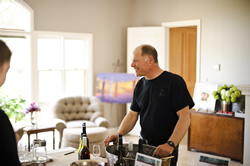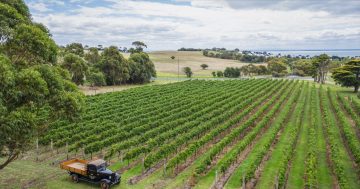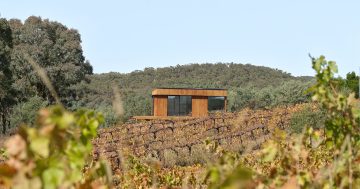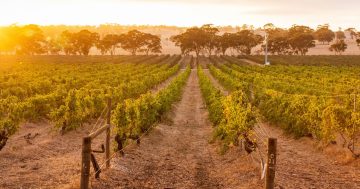By John Rozentals.
I must admit to never having drawn a connection between vineyard altitude, intensity of UV radiation and wine quality.
Sure, I’d long realised the importance of altitude in reducing average temperatures and hence in moving vineyards from mild to cool zones, or indeed from warm-hot to cool.
Altitude is why Queensland’s Granite Belt can be classified as cool despite a latitude that would normally have in rated as warm-hot.

Gerald Naef … “With less atmosphere above us at 900 metres above sea level we experience greater UV light intensity.”
And why the vignerons of Orange adopted altitude as an essential part of their appellation process, with only grapes grown at 600 metres or higher being able to be labelled as coming from Orange.
It took a note from Gerald Naef, owner and winemaker at Orange’s Patina Wines, to draw my attention to the question of altitude and UV radiation.
“With less atmosphere above us at 900 metres above sea level we experience greater UV light intensity,” he said.
I initially took this claim with a grain of salt, but some quick fact-checking indicated that there is indeed a significant increase — some 6 per cent at 1000 metres.
So how does this relate to wine quality?
Gerald continues: “The grapevines deal with this intensive UV radiation by thickening the grape skins and, since all the flavour and colour come from the skins, we naturally produce wines with more flavour.”
Again, initial research supports the theory. What’s not in any doubt is the quality of the chardonnay Gerald is producing at Patina, just on the Lucknow side of Orange.
 WINE REVIEWS
WINE REVIEWS
Patina 2015 Chardonnay ($35): Pure, ripe, intense melony fruit flavours announce this dry white as coming from a cool climate. Without winemaking interference it would probably have remained a simple chardonnay but use of natural vineyard yeasts and barrel-fermentation have added desirable complexity.
Patina 2015 Reserve Chardonnay ($45): A case of more of the same, only more so. The wine sits in a riper fruit spectrum than does the ‘ordinary’ chardonnay, leaning more towards nectarines and white peaches. There’s a distinct nuttiness and creaminess from maturation on yeast lees and the wine is a very multi-layered, complex one.
 WINE OF THE WEEK
WINE OF THE WEEK
Robert Stein 2014 The Kinnear ($80): This blend of 97 per cent shiraz and 3 per cent cabernet represents the pinnacle of what Jacob Stein is producing at Mudgee, and takes its name from the ship that brought Johann Stein and family to Australia to work on a vineyard near Camden. This is a top-shelf red — rich in fruit flavours but only moderate in tannin. It’s drinking well already but has many years of cellaring potential ahead of it.










